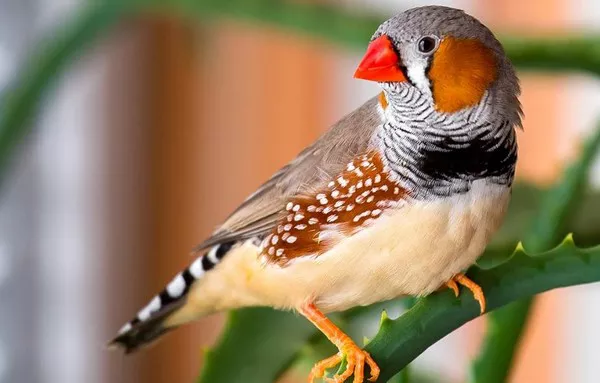Betta fish (Betta splendens) and tetra species (family Characidae) are among the most popular freshwater fish in the aquarium hobby. Bettas, known for their vibrant colors and long, flowing fins, and tetras, renowned for their peaceful nature and schooling behavior, are both visually stunning and relatively easy to care for. However, the question of whether these two species can live together harmoniously in the same tank often arises. The answer depends on a variety of factors, including their natural behaviors, environmental needs, and how well their individual temperaments can be balanced in a shared space.
This article will explore whether bettas and tetras can cohabit, the specific conditions that must be met for successful cohabitation, the potential challenges, and the species of tetras that are most likely to live peacefully with bettas.
Understanding Betta Fish Behavior
Betta fish, also known as Siamese fighting fish, are well-known for their aggressive and territorial nature, especially the males. In the wild, male bettas will fight with other males for dominance, often showing off their vibrant colors and extended fins as a display of strength. Bettas are also solitary creatures by nature, meaning that they don’t seek out the company of other fish for companionship. This territorial instinct can cause problems in a community aquarium, particularly with species that are seen as rivals or invaders of their space.
Male bettas are especially aggressive towards other male bettas and, to a lesser extent, towards other fish that have long, flowing fins, which might be seen as a challenge or threat. Females, though less aggressive, are still prone to territorial behavior, particularly when breeding. For these reasons, it’s crucial to carefully consider tankmates for a betta, as choosing the wrong companions could lead to stress, injury, or even death for one of the fish.
However, not all bettas are equally aggressive. Some individual bettas may have a milder temperament and can tolerate certain tankmates, but it’s always best to err on the side of caution when selecting companions for your betta.
Understanding Tetra Behavior
Tetras are small, peaceful fish that are often found in schools in their natural habitats, such as South America and Africa. Tetras are known for their tranquil nature, and they thrive in groups where they feel safe and secure. They typically live in the middle or lower levels of the aquarium and are not territorial, making them excellent candidates for community tanks. Some of the most popular tetra species kept in aquariums include neon tetras, cardinal tetras, black skirt tetras, and glowlight tetras.
Tetras are non-aggressive, which means they are unlikely to pose a threat to other fish, including bettas. However, tetras are small, and their delicate size and shimmering colors can sometimes attract the attention of larger or more aggressive fish. This is particularly true for species with long, flowing fins, such as bettas. While tetras are generally peaceful, they do benefit from being in schools of at least six individuals, which helps them feel secure and minimizes stress.
When choosing tetras as tankmates for a betta, it’s important to consider both the size and temperament of the species. Small, peaceful tetras that live well in schools are the best candidates for cohabiting with a betta. However, tetras that are too small, such as the very tiny ember tetras, may be at risk of being harassed or attacked by the betta.
Factors to Consider for Successful Co-habitation
1. Tank Size
One of the most important factors in determining whether bettas and tetras can live together is the size of the tank. Betta fish, particularly males, require a minimum of 5 gallons of water for their own well-being. A 10-gallon tank is ideal for a betta, and a larger tank will provide more space for the fish to establish territories.
When adding tetras to the tank, it’s important to ensure that there is enough space for the tetras to swim freely in schools and for the betta to have its own territory. A 20-gallon tank or larger is usually the best size for a betta-tetra community, as this gives both species plenty of room to thrive.
A larger tank also helps to maintain better water quality and reduces the risk of stress and aggression. Overcrowding can lead to poor water conditions, which can affect both species negatively. A well-maintained tank with plenty of space for both the betta and tetras is key to preventing territorial disputes and providing a healthy environment.
2. Water Conditions
Both bettas and tetras have specific water conditions that need to be met for them to thrive. Bettas prefer warm water, with a temperature range of 75–80°F (24–27°C). Tetras also prefer warm water, but some species, such as neon tetras, can tolerate slightly cooler water in the range of 72–78°F (22–26°C). It’s essential to keep the water temperature consistent to avoid stressing the fish.
Both species also prefer slightly acidic to neutral water, with a pH between 6.5 and 7.5. Water hardness should be in the range of 4–8 dGH for both species.
Maintaining stable water conditions is crucial for the health of both bettas and tetras. It’s important to have a reliable aquarium heater and filter system to regulate water temperature and quality. Regular water changes are also essential to keep the tank environment clean and safe for the fish.
3. Feeding Habits
Betta fish are carnivores and will primarily eat protein-based foods such as pellets, flakes, bloodworms, and brine shrimp. They have a hearty appetite and will readily consume food when offered. Tetras are omnivores and will accept a variety of foods, including flakes, pellets, and live or frozen foods like daphnia, brine shrimp, and small worms.
When feeding bettas and tetras together, it’s important to ensure that both species are receiving the proper nutrition. Betta food is generally higher in protein than tetra food, so it’s essential to provide the right types of food for each species. Be cautious with feeding times, as bettas may try to eat food meant for the tetras, and tetras may struggle to compete with the betta for food.
It’s best to feed in separate areas of the tank or at different times to prevent food competition. Additionally, make sure that any uneaten food is promptly removed to prevent water quality issues.
4. Temperament and Behavior
As mentioned earlier, bettas are territorial and can display aggression, especially toward other fish that have similar physical features, such as long fins. Tetras, on the other hand, are peaceful and social, thriving in groups of their own species. The challenge lies in the fact that bettas may view the small, active tetras as competitors or threats, especially if they are brightly colored or have long fins.
However, the likelihood of aggression can be reduced if the tank is well-planted with plenty of hiding spaces for the tetras. Live plants, rocks, and driftwood can provide shelter and help create visual barriers, allowing the tetras to feel secure and reducing the chances of conflict.
Male bettas are more likely to be aggressive than females, so it’s a good idea to avoid keeping multiple males in the same tank, even if they are kept with peaceful tetras. Female bettas can sometimes be less aggressive, but they may still display territorial behavior, particularly in smaller tanks.
Best Tetra Species for a Betta Community Tank
Not all tetras are suitable for living with bettas. Some tetras are more active, larger, or have long fins that might attract the attention of a betta. However, there are several species of tetras that are known for their peaceful nature and are generally considered safe to keep with bettas. Here are some of the best tetra species to consider for a betta community tank:
1. Neon Tetras (Paracheirodon innesi)
Neon tetras are one of the most popular species of tetra and are well-known for their bright blue and red coloration. They are small, peaceful, and typically stay in schools, which makes them an excellent choice for a betta community tank. Their size (around 1.5 inches) and behavior make them less likely to provoke a betta.
2. Cardinal Tetras (Paracheirodon axelrodi)
Cardinal tetras are similar to neon tetras but are slightly larger and have a more vibrant red coloration. They are also peaceful and thrive in schools, making them suitable tankmates for a betta. Their small size and non-aggressive behavior make them a good fit for a betta’s tank.
3. Glowlight Tetras (Hemigrammus erythrozonus)
Glowlight tetras are small, peaceful fish that are characterized by their bright orange coloration. They are typically less active than other tetras, which may make them less likely to provoke a betta. Glowlight tetras also do well in schools, which is important for their overall well-being.
4. Black Skirt Tetras (Gymnocorymbus ternetzi)
Black skirt tetras are slightly larger than some other species of tetras but are still peaceful and non-aggressive. They are hardier than other tetra species and can adapt to a wide range of water conditions. However, their longer fins can sometimes attract the attention of a betta, so it’s important to keep them in a tank with plenty of hiding spots.
5. Ember Tetras (Hyphessobrycon amandae)
Ember tetras are tiny fish with vibrant orange coloring, making them visually distinct from bettas. While their small size may make them vulnerable to aggressive bettas, they are generally peaceful and do well in schools. They are also less likely to get in the way of a betta’s territory.
Potential Risks and Challenges
While it is possible for bettas and tetras to live together under the right conditions, there are several challenges that may arise. Some of the potential risks include:
Aggression: Bettas, especially males, may become aggressive toward tetras if they perceive them as a threat or intruder. This is particularly true if the betta feels crowded or stressed.
Food Competition: Betta fish are often more aggressive eaters than tetras, and they may dominate feeding times, preventing tetras from getting enough food.
Fin Nipping: Tetras may sometimes engage in fin nipping, especially if they are stressed or feel threatened. This can lead to injury to the betta’s delicate fins.
Stress: Both species can become stressed in a crowded or poorly-maintained tank. Stress can weaken their immune systems and lead to health issues.
Conclusion
In conclusion, bettas and tetras can live together in the same tank under the right conditions. By choosing the right species of tetras, providing enough space, maintaining optimal water conditions, and monitoring the behavior of both species, you can create a peaceful and harmonious community tank. While there are challenges to be aware of, such as aggression and food competition, many aquarists successfully house bettas and tetras together, enjoying the beauty and tranquility of both species in their tanks.
By carefully considering the temperament and needs of both fish, you can create a balanced aquarium that benefits both the betta and the tetras, enhancing the overall aquarium experience.
Related Topics:




















